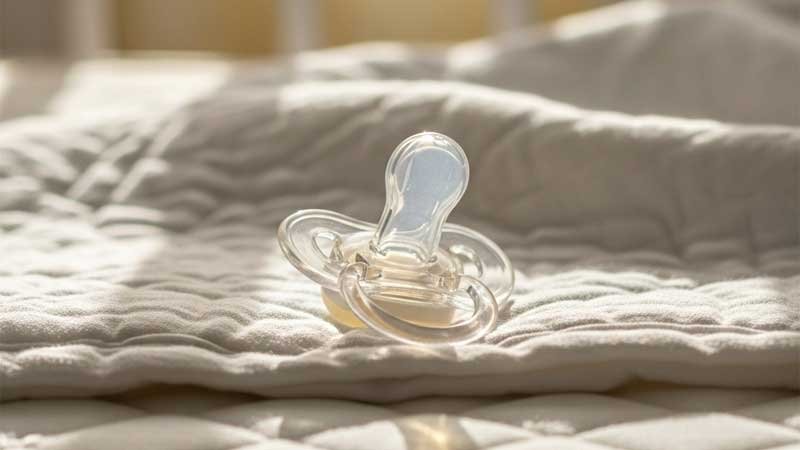In modern material applications, both silicone and nylon are widely used synthetic materials. Many people ask: what are the key differences between silicone and nylon? And in which scenarios is each more suitable? This article will give you a clear explanation from several perspectives, including structure, performance, manufacturing processes, and application fields.

What Are the Structural Differences between Silicone and Nylon?
To understand the differences, we first need to look at their molecular structures. Silicone is a synthetic elastomer based on a silicon-oxygen (Si–O) backbone, combining both inorganic and organic properties. This structure gives silicone the softness of rubber along with excellent weather resistance and chemical stability. Its inert nature makes it safe and reliable for applications that come into contact with the human body or food.
Nylon is a type of synthetic polyamide and a typical engineering plastic. Its carbon chains combined with amide groups provide high strength and wear resistance while keeping it lightweight. This makes nylon ideal for large-scale use in mechanical components and textiles. Compared with silicone, nylon focuses more on structural support, while silicone emphasizes comfort and environmental adaptability. These differences in positioning explain why the two materials complement each other in the market.
How Do Silicone and Nylon Differ in Physical Properties?
In practical applications, designers and buyers often focus on a material’s physical properties because they directly affect a product’s lifespan and performance. Silicone and nylon differ significantly in hardness, temperature resistance, mechanical strength, and permeability. These differences determine their ideal applications. Silicone’s flexibility and wide temperature tolerance make it suitable for a range of uses, from delicate medical devices to high-temperature industrial components. Nylon offers excellent strength and wear resistance, making it the preferred choice for load-bearing parts and components subject to long-term friction.
| Property | Silicone | Nylon |
| Hardness Range | Shore A10–A80, from very soft to firm | Higher rigidity, suitable for load-bearing |
| Temperature Resistance | -60°C to +230°C, some grades up to 300°C | -40°C to +120°C, softens at high temperatures |
| Mechanical Strength | Lower strength, relies on toughness and elasticity | High tensile strength, impact-resistant, excellent wear resistance |
| Permeability | Highly permeable, suitable for medical catheters | Nearly impermeable, better for protective applications |

What Are the Differences in Chemical and Environmental Resistance?
The way materials respond to chemicals, humidity, and outdoor exposure directly affects their durability and reliability. Silicone and nylon each have their strengths, making them suitable for different applications.
Silicone
- Strong chemical stability: Thanks to its silicon–oxygen backbone, silicone is highly inert. It hardly reacts with acids, bases, or salt solutions. Even in harsh chemical conditions, its molecular structure remains stable, unlike many plastics that corrode or degrade.
- Excellent weather resistance: Silicone resists UV light, ozone, and oxidation very well. Even after long outdoor exposure, it rarely cracks, becomes brittle, or loses elasticity. This makes it ideal for products used in harsh environments.
- Tolerance to extreme conditions: Beyond chemical resistance, silicone performs reliably under high heat, freezing cold, or humid climates. Temperature and weather changes have little impact on its properties.
Nylon
- Limited chemical resistance: Nylon performs well against oils and some organic solvents. This is why it is used in lubricated parts. However, strong acids and bases can damage its molecular chains, reducing strength and leading to rapid degradation.
- High moisture absorption: Due to its amide groups, nylon readily absorbs water from the air. This causes swelling, weight gain, and reduced mechanical strength. In precision parts like gears or bearings, it can lead to gaps or jamming.
- Lower weather resistance: Prolonged sunlight exposure causes nylon to age as UV light breaks down its molecular structure. It often turns yellow, becomes brittle, and loses strength. To be used outdoors, nylon usually needs stabilizers or antioxidants.

What Are the Differences in Processing and Manufacturing Methods?
From a production standpoint, silicone and nylon differ greatly in their processing techniques.
Silicone
Common methods include compression molding, liquid injection molding (LIM), and extrusion. Silicone offers high flexibility, making it possible to create complex shapes, transparent parts, and products in customized colors by adding masterbatch. This versatility makes it ideal for small-batch customization and products that demand refined appearance, such as medical devices or personalized silicone accessories.
Nylon
Nylon is mainly processed through injection molding and extrusion. These methods are mature, efficient, and supported by long-lasting molds, making nylon very cost-effective for mass production. Applications such as gears, bearings, and textile fibers rely on nylon’s strength and the efficiency of high-volume manufacturing.
Key Consideration
Silicone molds generally wear out faster than nylon molds, leading to higher costs in large-scale production. However, for products that require differentiation and functional versatility, silicone’s processing flexibility often delivers greater value.

What Are the Application Scenarios for Silicone and Nylon?
The different properties of silicone and nylon define their roles in various industries.
Food and Kitchenware
Silicone can handle both high and low temperatures without releasing harmful substances. It is widely used in baking trays, molds, spoons, and sealing rings, making it a star material for food-contact products.
Nylon, being lightweight and wear-resistant, is often used in spatulas, tongs, and knife handles. However, it may deform under high heat, which requires attention.
Medical and Healthcare
Thanks to its biocompatibility, silicone is common in baby pacifiers, catheters, and implantable medical devices.
Nylon is more suitable for disposable products such as syringes and sutures. While it is not fit for implantation, its strength and cost-effectiveness keep it in demand.
Industrial and Engineering
Silicone is frequently found in seals, gaskets, and cable insulation, valued for its insulation and heat resistance.
Nylon serves as a material for gears, bearings, and housings, often replacing metals to reduce both weight and cost.
Consumer Electronics and Everyday Products
In electronics, silicone appears in buttons, protective cases, and keyboard covers, offering durability and a soft touch.
Nylon is widely used in device housings, zippers, and backpack straps, where strength and light weight are key.

Conclusion
Silicone and nylon are not replacements for each other. Instead, each has unique strengths. The choice should always depend on your specific needs. When durability under high and low temperatures or long-term contact with the human body and food is required, silicone is the better option. For structural parts that demand high strength, wear resistance, and cost efficiency, nylon is more suitable.
If you are looking for a reliable partner to customize silicone products, we welcome you to contact us. Based on your requirements, we can provide food-grade, medical-grade, and industrial-grade silicone solutions, helping you make your products safer, longer-lasting, and more dependable.